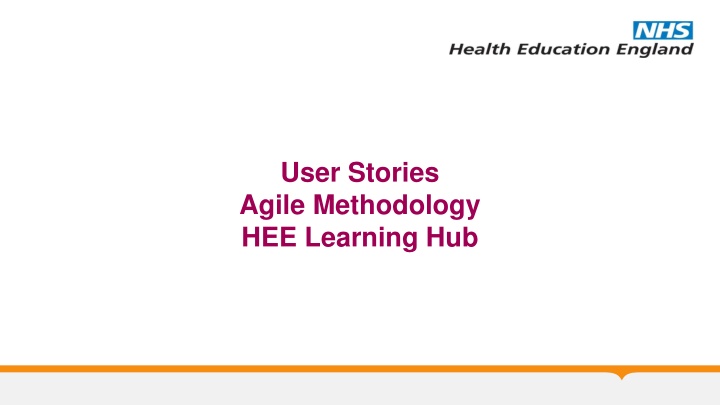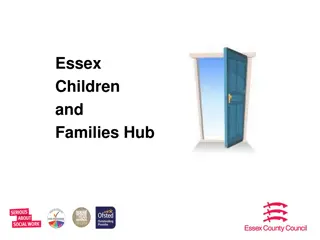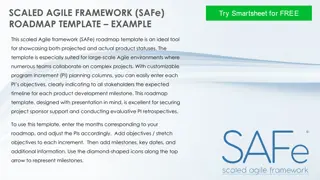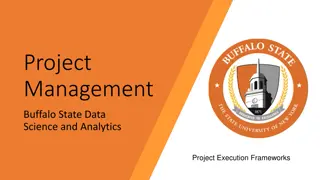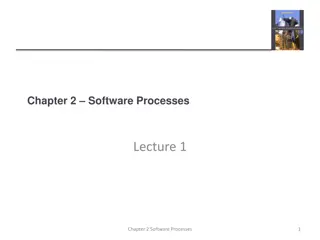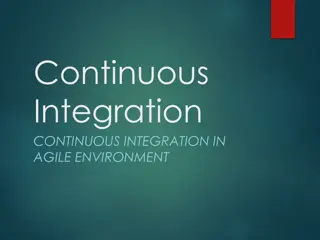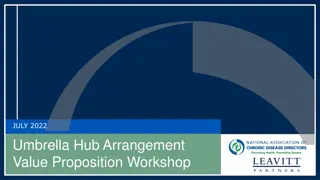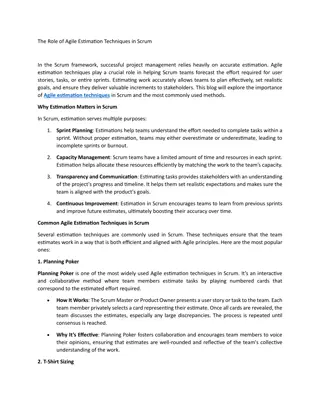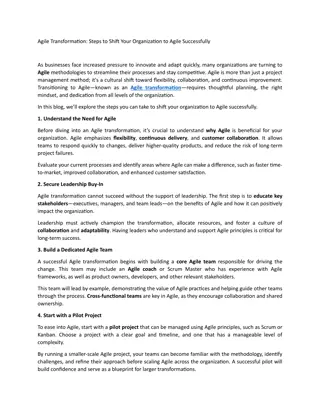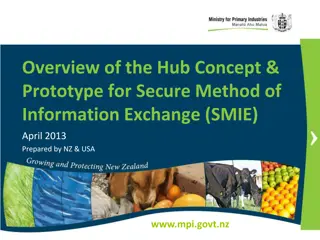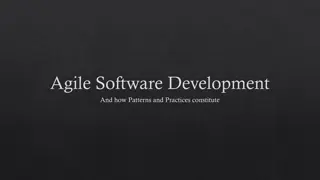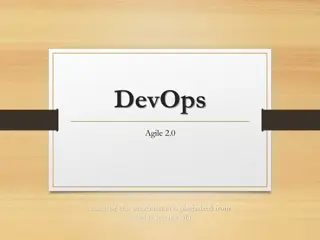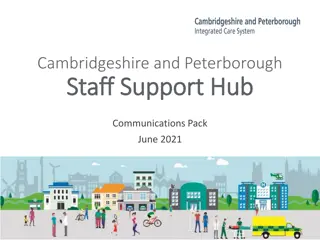User Stories Agile Methodology HEE Learning Hub
User stories are a vital tool in Agile project methodology, capturing product functionality from the user's perspective. Learn about user personas, top tips for creating effective user stories, and examples of user story templates.
Download Presentation

Please find below an Image/Link to download the presentation.
The content on the website is provided AS IS for your information and personal use only. It may not be sold, licensed, or shared on other websites without obtaining consent from the author.If you encounter any issues during the download, it is possible that the publisher has removed the file from their server.
You are allowed to download the files provided on this website for personal or commercial use, subject to the condition that they are used lawfully. All files are the property of their respective owners.
The content on the website is provided AS IS for your information and personal use only. It may not be sold, licensed, or shared on other websites without obtaining consent from the author.
E N D
Presentation Transcript
User Stories Agile Methodology HEE Learning Hub
What is a user story? Is a tool used in agile project methodology to capture product functionality Helps shift the focus from technical and functional views to the user and how they interact with the system User stories are short, simple descriptions of a feature told from the perspective of the person who requires/desires the new capability, usually a user or customer of the system.
Purpose of user stories A user story describes how a user employs the product; it is told from the user s perspective. This Photo by Unknown Author is licensed under CC BY-SA
Top tips 1 Identify the users Users come first! You need to be confident you are involving the right people who can provide a user s perspective. Try to split the users into personas. Personas enables the splitting of users into common user groups who will be carrying out the same functions in the system.
User Personas/Types - Examples Here are a few examples of user personas or types that we have for the Learning Hub: Learner Tutor Manager Author Trust admin/reporter HEE admin/reporter
Top tips 2 Keep the stories simple and concise Focus on what is important. Write your stories so they are easy to understand. Keep them simple and precise. By using sticky notes you are able to facilitate collaboration and stories can be easily grouped to check for consistency.
User story - template As <User type/Persona>, I want <what feature>, so that <why the feature is needed, the benefit>. This template focuses on providing a concise response making the benefits explicit. Avoid using confusing or ambiguous terms.
User story - examples From the previous examples of personas, let s look at a few statements for a learner: As a learner, I want to find learning relevant to me, so that I can develop in my role and onto my next. As a learner, I want to see the learning I have completed, so that I can prove my personal development.
User story - examples From the previous examples of personas, let s look at a statement for a manager and an author: As a delegated supervisor, I want to see my team s completed learning, so that I can keep track of how my team are developing. As an author, I want to be able to upload my content, so that others can learn from my experience.
User story - writing them up Physical whiteboard, or widely available online tools. Learner Learner Manager Manager As a Learner, As a Learner, I want to find I want to find learning relevant learning relevant to me, to me, so that I can so that I can develop in my role develop in my role and onto my next. and onto my next. As a Learner, As a Learner, I want to see I want to see the learning I the learning I have completed, have completed, so that I can so that I can prove my personal prove my personal development. development. As a Manager, As a Manager, I want to see my I want to see my team s completed team s completed learning, learning, so that I can keep so that I can keep track of how my track of how my team are developing. team are developing.
